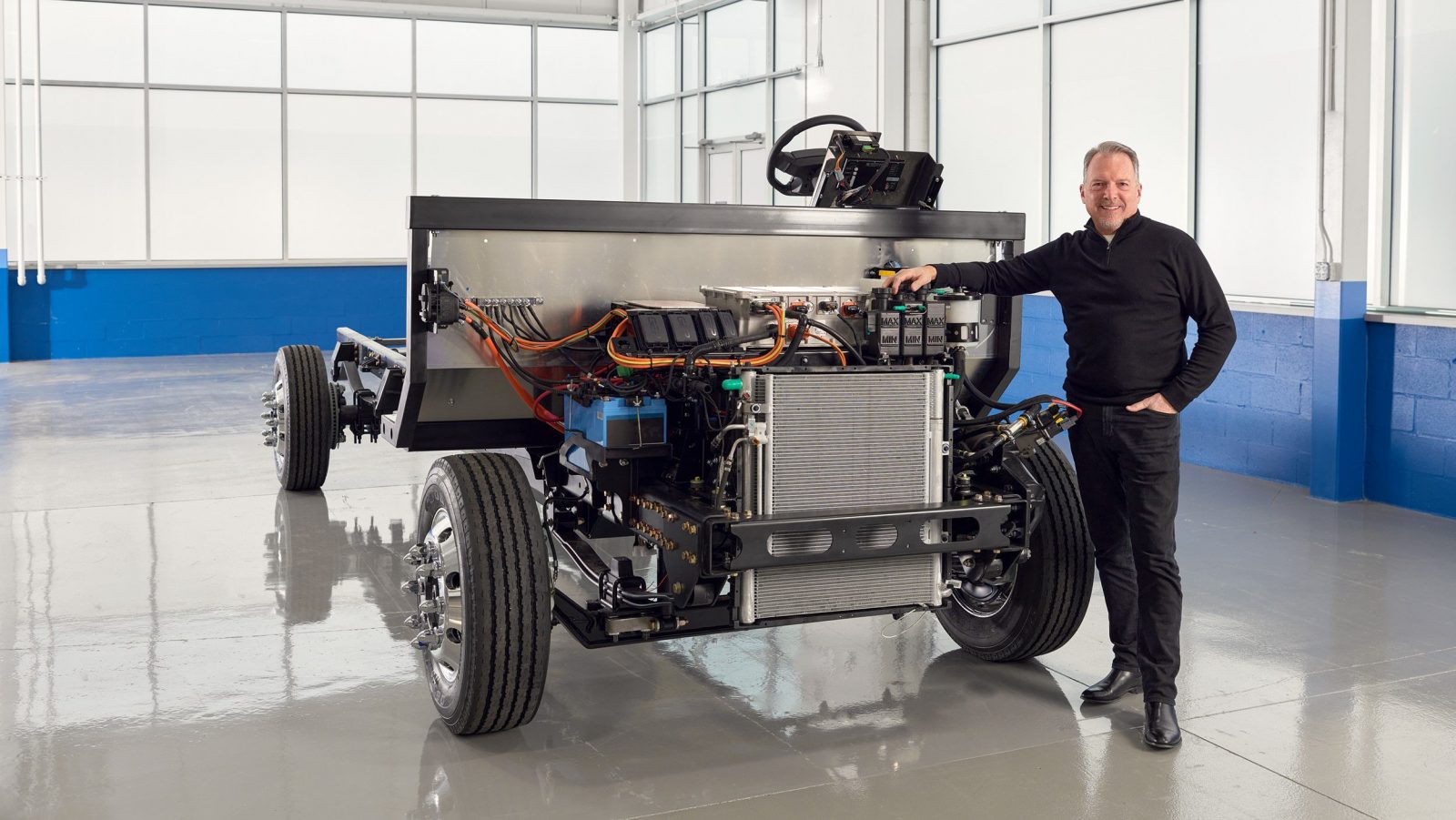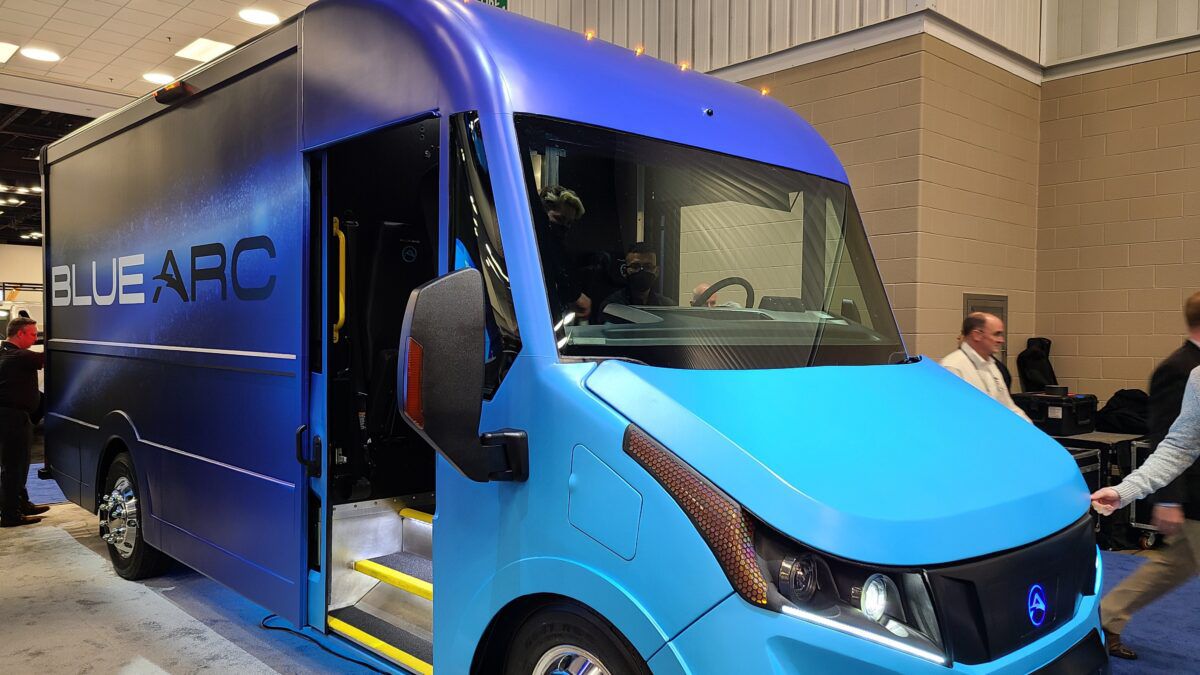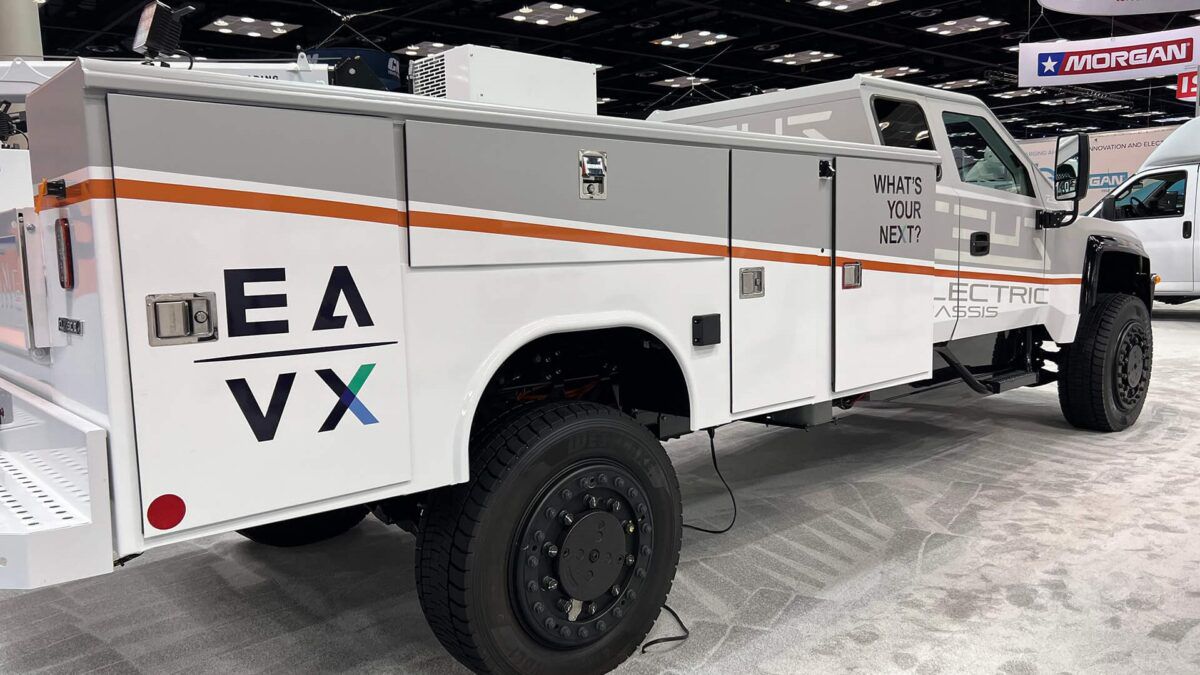 Daryl Adams, president and CEO of the Shyft Group, with the company’s homegrown Class 3 electric delivery van chassis. (Photo: Shyft Group)
Daryl Adams, president and CEO of the Shyft Group, with the company’s homegrown Class 3 electric delivery van chassis. (Photo: Shyft Group)
As the cost gap shrinks between conventional and electric delivery vans and work trucks, legacy bodybuilders and startups from A to Z seek leadership and market share.
It’s a smart play. Research shows that practically every van and step van in service today can make an economic case to run on electricity.
Current battery technology meets the operational requirements for smaller commercial vehicles. That’s especially true in Class 3 through Class 6 trucks. They account for U.S. production of about 150,000 units a year, according to S&P Global Mobility.
The battery packs are smaller and don’t impact cargo capacity or payload. The vans typically operate on a single shift, so fast charging is unnecessary. Power requirements, charging and infrastructure costs are reduced.
Work truck body and chassis manufacturers saw this coming. Their approaches differ, but the goal is the same: Lead. Don’t follow.
Shyft develops electric chassis and body
Shyft’s newest addition is Blue Arc, a division revealed at the NTEA Work Truck Show in March. Rather than just a van body, Blue Arc is a complete battery-electric truck.
“When we looked at the availability of a Class 3 chassis in our space, we couldn’t find anybody that had the right chassis for us and our customers. So, we developed our own,” Daryl Adams, Shyft Group president and CEO, told .
“So that’s why we decided to do our own,” Adams said. “We wanted to get the prototypes in our customers’ hands and let the product speak for itself.”
Shyft’s experience includes converting conventionally powered trucks to electric by removing the transmission and engine and putting an electric motor on the drive shaft. The Blue Arc van uses a full-frame chassis for better ground clearance and because “drivers don’t want to step over humps and things inside the cab.” Adams said.
 The Shyft Group showed the Blue Arc Class 3 electric delivery van at the NTEA Work Truck Show in Indianapolis in March. (Photo: Alan / )
The Shyft Group showed the Blue Arc Class 3 electric delivery van at the NTEA Work Truck Show in Indianapolis in March. (Photo: Alan / )
Class 3 particulars
Class 3 vans weigh 10,001 to 14,000 pounds and have additional licensing requirements and carry higher insurance premiums. They are designed to last 15 years or more and meet warehouse dock heights for loading and unloading.
Shyft developed the electric chassis for the Blue Arc in just seven months. The body took three months more. Prototypes for customer evaluation should be delivered by the second half of this year Production begins in the second half of 2023. A Class 5 version (16,001 to 19,500 pounds gross weight) is expected to follow.
“We know others are going to come into our space, and that’s fine,” Adams said. “But unless you know the customer, you’re probably not going to get the vehicle right.”
EAVX helps electric chassis makers from A to Z
Bollinger’s Chass-E Cab will come with either a 105-kWh or 140-kWh battery pack. It is capable of feeding motors at the front and rear, or just the rear.
Other startups entering the electric chassis arena include Atlis Motors and Zeus Electric Chassis Inc., both offering so-called skateboard chassis that enclose the batteries and power electronics within a flat floor structure. Another startup, Israeli-based REE Automotive, takes that further by moving the electronics to the wheel corners.
“Instead of reacting to what was going on, we want to go out and say, ‘OK, what’s the next generation of work trucks look like?’” Mark Hope, EAVX chief operating officer, told . “EAVX’s role is to help work with the market and work with the chassis manufacturers to accelerate it.”
 EAVX, the newest division of JB Poindexter Co., works with startup electric chassis makers like Zeus Electric Chassis Inc., to integrate bodies that take advantage of electrical architectures. (Photo: Zeus Electric)
EAVX, the newest division of JB Poindexter Co., works with startup electric chassis makers like Zeus Electric Chassis Inc., to integrate bodies that take advantage of electrical architectures. (Photo: Zeus Electric)
More than an electric top hat
“From an electrification standpoint, you could just put a body on top of a chassis, and we do that every day,” Hope said. “If you do that, you start to lose some of the advantages an EV chassis can give you. You have to think about the body differently. The two things have to be married together in a different way.”
Understanding the planned range of the truck and the cooling of the electric system differs from a truck with an internal combustion engine.
“When you look at a company like Atlis, they’re going to need some assistance in being able to develop those products,” Hope said. “We’ll provide that engineering support to them on the accessory side. Even a tonneau cover would have to be adapted to their truck.”
“We are agile and pivot when necessary,” Hanchett said. “We’re not cobbling a number of pieces together that weren’t designed to fit together in the first place.”
Getting the most from EAVX
Zeus, too, appears to want more from EAVX and other JBPCO divisions.
Growing electric bandwidth
The rapid adoption of electric passenger cars will jump-start commercial electric vehicles, Hope said.
“One of the biggest barriers is getting the [charging] infrastructure,” he said. “As more and more people start to drive EVs… that will start to drive costs down.”
“There’s some substantial growth coming starting in 2024,” Hope said. “Some of the regions within California are looking to go above and beyond what the CARB regulations are. They’re going to electrify the work site. It’s not just the last mile. It’s everything.”
Cowen analyst Jeffrey Osborne said charging remains the biggest obstacle to demand for electric commercial vehicles
“One fleet operator we spoke with likened the situation to bandwidth to the home where fleets are now evaluating distribution centers based on how big the electrical ‘pipe’ is into the building, akin to a teenager wanting gigabyte-speed broadband bandwidth.”




